What to do if the washing machine makes a noise during spinning?
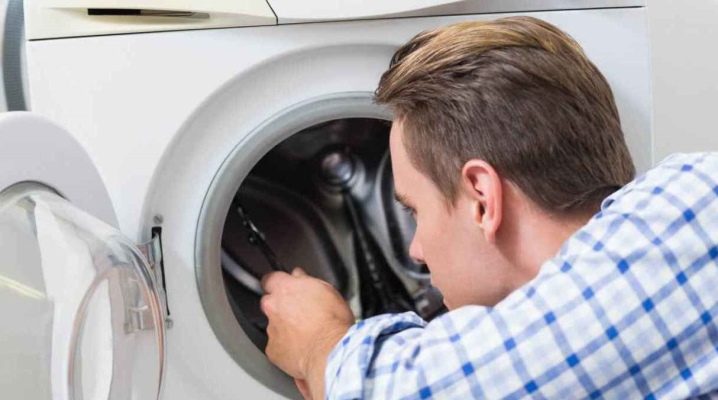
During operation, the washing machine emits sounds, the presence of which is inevitable, and they become stronger at the moment of spinning. But sometimes sounds are too unusual - the equipment begins to hum, knock, and even clanking and rattling can be heard. Such noise is not only annoying, but also indicates that a breakdown has occurred. If you ignore the unusual sounds and do not take the appropriate measures to eliminate them in time, the machine may break down completely, and it will require expensive repairs.
Some malfunctions and their causes can be eliminated on their own, and more complex problems can only be solved by a qualified specialist from the service center.
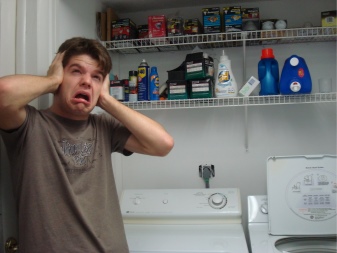
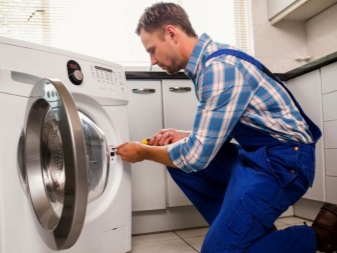
The reasons for the appearance of extraneous sounds
To establish the presence of problems, you need to listen and determine how the washing machine makes noise during spinning and in the washing mode. The malfunction will manifest itself as follows:
- the car knocks hard, a strange whistle appeared, it rattles, and something clangs in it;
- at high speeds during spinning, something whistles and squeaks, it seems that the drum is rattling;
- during the washing process, the washing machine makes too loud sounds - a grinding sound is heard, it hums.
Another characteristic feature that occurs when the washing machine malfunctions is that rusty stains appear on the laundry after washing, and small puddles under the bottom of the case due to water leaks.
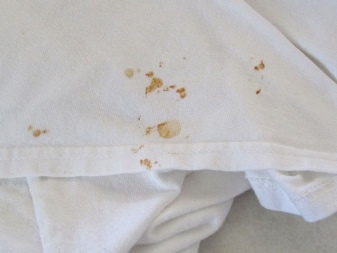

Not every breakdown can be determined on your own; in difficult situations, the help of a specialist will be required.
Drum malfunction
During the spinning process, the washing machine sometimes jams the free running of the drum. In such a situation, the engine begins to operate at maximum speed and emit strong droning sounds that are uncharacteristic for a normal process. The reasons for the jamming of the drum can be different.
- Belt pulls out or breaks - this situation happens if the washing machine is overloaded with laundry. In addition, the belt may fail due to wear or stretching during a long period of use. A loose or slack belt can wrap around the rotating pulley, blocking the drum and causing noise.
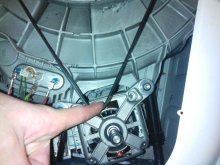
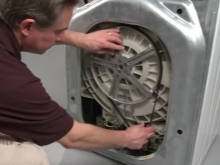
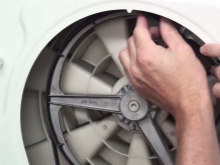
- Bearing wear - this part of the working unit can also be worn out over time or even destroyed. The bearing makes whistling sounds, clanking, grinding, and may even jam the rotation of the drum. It is not difficult to check the serviceability of the bearings - unplug the machine from the mains, press the drum and shake it from side to side. If you hear a grinding noise, then the problem is in this place.
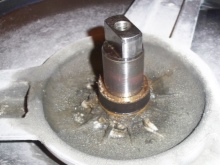
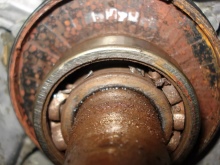
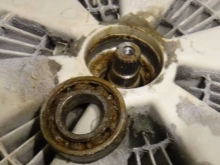
- Burnt out speed sensor - the drum may stop rotating if this unit is out of order.
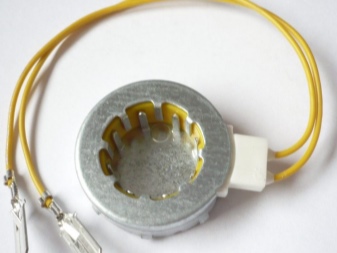
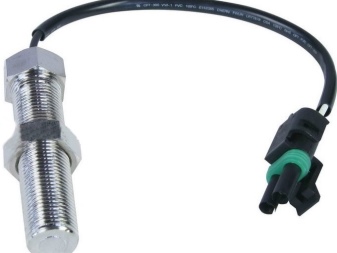
Drum-related breakdowns are most common when the washing machine starts making sounds that are unusual for it.
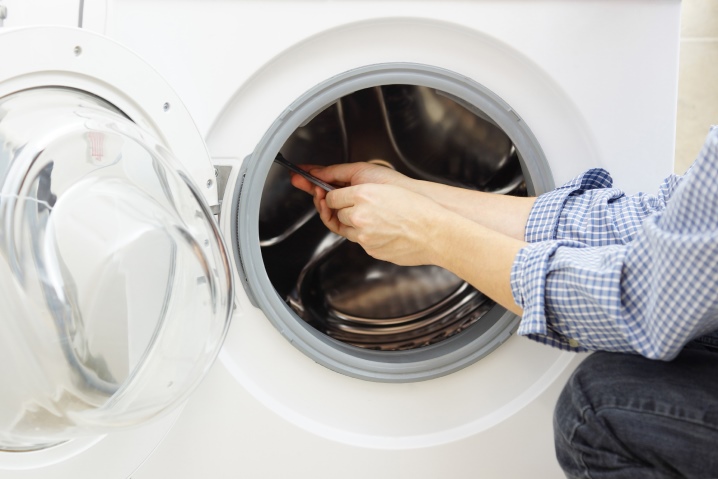
Ingress of foreign objects
If, during the washing process, foreign objects fall into the gap between the water heating tank and the drum, then the rotation of the latter can be blocked, which causes increased engine operation and is accompanied by a characteristic noise.
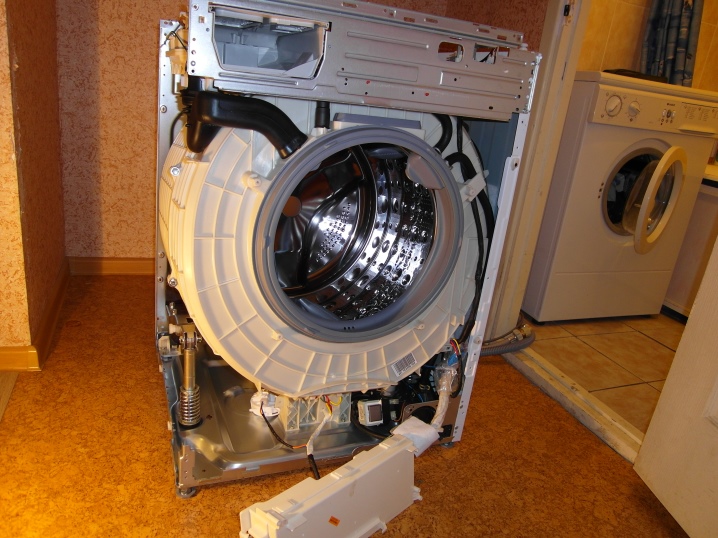
Foreign objects can enter the gap between the tank and the drum in the following way:
- through the rubber cuff, closing this gap during the washing process, this can also happen, if the rubber seal is loose, torn or deformed;
- from pockets of washable clothes - together with bed linen or other things due to inattention;
- during washing when tearing off loosely sewn beads, buttons, rhinestones, hooks and other decorative items of clothing;
- presence of foreign objects may end up in the powder compartments, sometimes children can discreetly put their small toys there.
Sometimes a few minutes spent before washing to check all the pockets and folding all the small things or richly decorated with decorative elements in a special washing bag can avoid serious damage to the washing equipment.

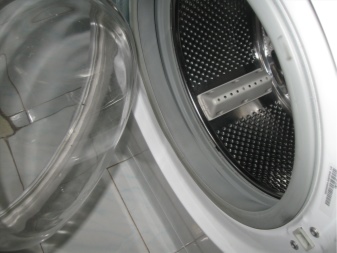
Engine breakdown
Excessive overloads can damage the electric motor in the washing machine. There are also several reasons for this.
- High percentage of worn out brushes - such a problem often arises for devices whose service life has exceeded the 10-15 year mark. Worn brushes begin to spark, but even if their integrity is not compromised, the worn out parts must be completely replaced.
- Opens or short-circuits of the winding - there are windings of conductive material in the form of wire on the stator and rotor of the motor, sometimes they are damaged, in this case it will be necessary to replace the stator or rotor or rewind them.
- Collector malfunctions - This unit is located in the rotor of the engine and will need to be removed for inspection. The lamellas can peel off, collapse, while the brushes to which it is connected begin to spark. Lamellas detachment leads to overheating of the engine. Repair in this situation is quite difficult and only an experienced specialist can do it.
- Bearing damaged - the electric motor during its revolutions can operate with a noticeable runout, this may indicate that its bearing mechanism has failed, which will need to be replaced.

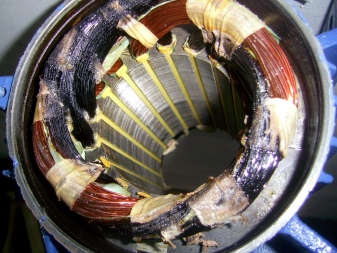
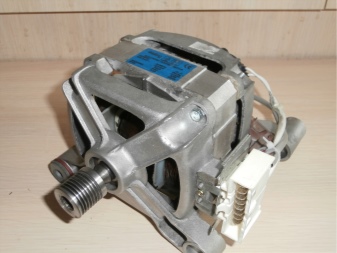
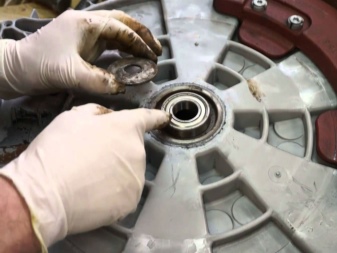
Engine breakdown is a rather serious malfunction, which cannot be diagnosed and eliminated by hand at home.
Other reasons
In addition to these reasons, the washing machine may emit loud noises due to other malfunctions.
- Shipping bolts not removed, which fix the springs of the drum during the movement of the machine over long distances from the manufacturer to the buyer.
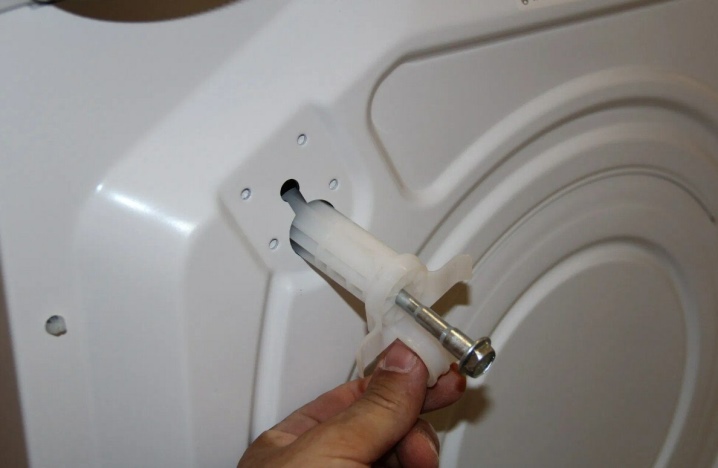
- The washing machine, when installed on an uneven floor, was not set strictly on a horizontal level, as a result of which it began to vibrate and move along the floor during washing and spinning.
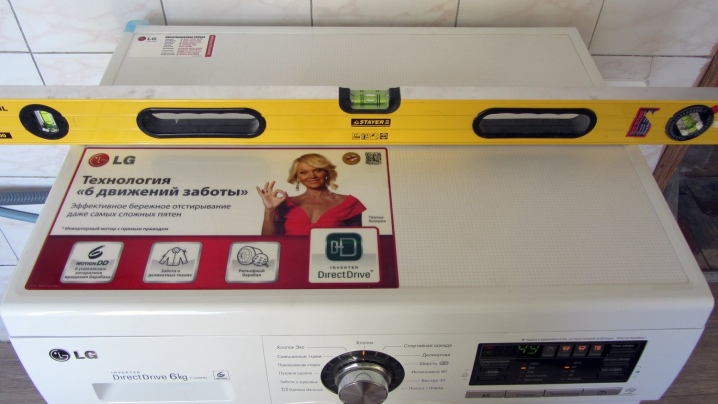
- Loose pulley - the problem arises during prolonged use of the washing machine. You can detect a malfunction by hearing characteristic clicks that are audible at the time of spinning. Removing the rear wall of the machine body and tightening the screw securing the pulley in place will fix this problem.

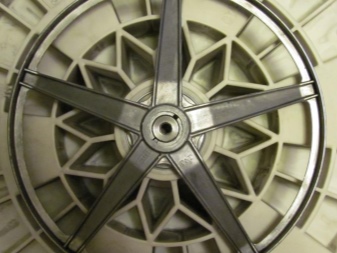
- Loose counterweight - the situation also at the time of the spinning operation appears when the equipment is used for a long time. Loud noise occurs when the counterweight, which is responsible for the reliable fixation of the water tank, is loosened. Such a malfunction can be eliminated on our own - you need to remove the case cover from the back and tighten the fastening screw.
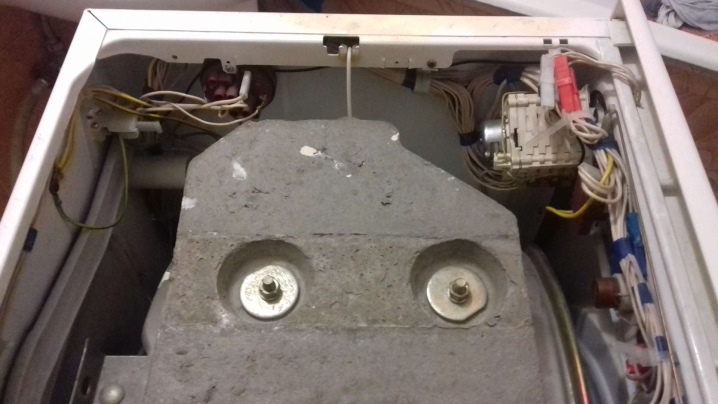
- Inexpensive models of washing machines sometimes make noise due to a poorly fitted rubber sealing cuff, as a result of which a whistling sound is heard during washing and pieces of this material are visible on the walls of the drum. Experts recommend, in this case, to fix a piece of coarse sandpaper between the seal and the front wall of the body, after which you need to run the machine in test mode without linen. Some time after the start of the wash cycle, the sandpaper will erase the extra millimeters from the rubber, as a result of which the whistling will stop.
If this method does not help, it makes sense to completely replace the rubber cuff.
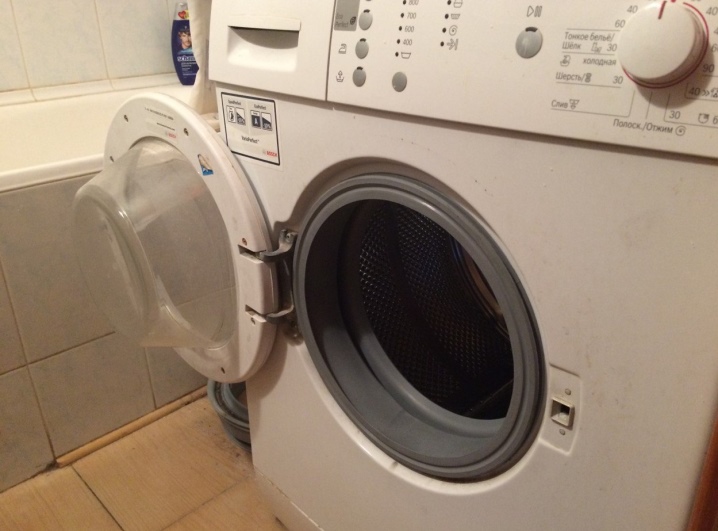
Such malfunctions do not represent a serious problem, but if they are not eliminated in time, then the situation can lead to the failure of other, more significant and expensive mechanisms, so you should not ignore minor breakdowns.
How do I fix the problem?
Before making a purchase of a new washing machine or contacting a service center for repair, if any malfunctions occur, try to assess their scale and the ability to fix it yourself.
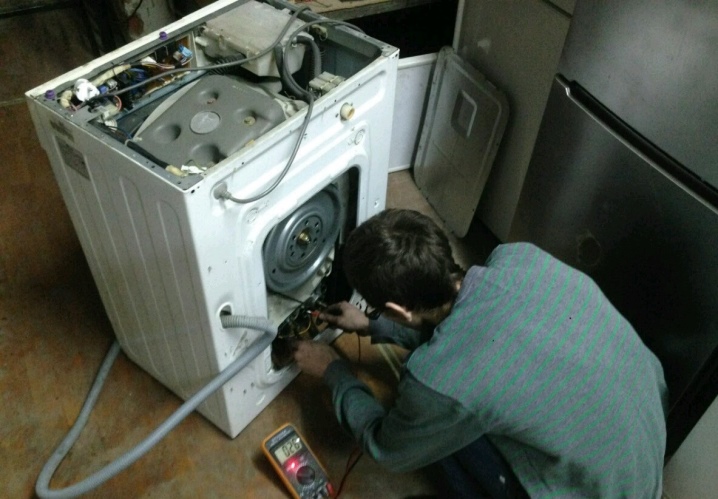
Required tools
To diagnose and troubleshoot some faults, you will need: a set of screwdrivers, a wrench, pliers and a multimeter, with which you can assess the level of current resistance and identify burnt-out electrical elements of the washing machine mechanism.
For easy disassembly and reassembly, arm yourself with a headlamp. And the whole process of parsing one or another element shoot with your phone or camera, so that later it will be easier for you to put the mechanism back together.
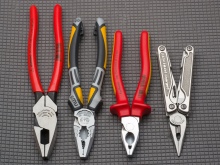
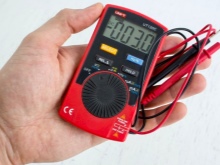
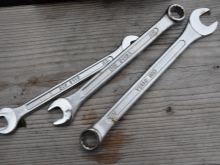
Carrying out work
The complex of works will depend on the reason that led to their occurrence.
- In the case when, after purchase and delivery to your home at the washing machine the transit bolts have not been removed, performing the function of fixing the drum springs, they will still need to be removed. It's easy to find them: they are located on the back of the case. Each manual for the machine contains a detailed diagram of their location and a description of the dismantling work. The bolts can be removed using a conventional wrench.
- If the washing machine was placed incorrectly during installationwithout adjusting its screw feet relative to the floor plane, such a skewed geometry of its structure will cause a loud noise during washing and beating during spinning. A special device called a building level will help to correct the situation. With its help, you need to adjust the position of the legs, twisting them until the horizon line in level becomes perfectly flat. To make the machine work quietly, after adjusting, you can put a special anti-vibration mat under the feet, which levels out slight distortions of unevenness in the floor.
- When loud noises in the washing machine are caused by foreign objects stuck in the space between the water heating tank and the rotating drum, the issue can be resolved only by removing these items from the body of the structure. To do this, you will have to remove the back wall of the car, remove the heating element, called the heating element, and collect all the accumulated debris. In some modern models of washing equipment, the collection of such small items is carried out in a special filter - then you need to substitute a container for collecting water under the washing machine, unscrew the filter, clean it, and then return it to its place.


Such actions are easy to perform, but solving more complex problems will require at least minimal skills in working with electrical engineering from you, and if you do not possess them, then it is better to entrust the repair to a specialist from the service center.
How can noise be prevented?
In order for the washing machine to serve for a long time, and when working in it, no knocking, whistling and other uncharacteristic sounds are heard, the risk of possible breakdowns can be minimized in a number of ways.
- To install a washing machine it is necessary to prepare the floor surface, making sure that it is even and smooth. At the time of installation, it is important to be sure to use the building level.
- Before starting operation, it is important not to forget to unscrew the transit bolts. The procedure for performing the work is in each instruction supplied with the washing machine.
- Never overload the machine too much, the washing program provided. Remember that the weight of the laundry increases as it absorbs water.
- Before putting the item in the washing machine, carefully inspect it, remove foreign objects, and wash small things in special bags.
- The interval between washing processes of an automatic washing machine must be at least 30-60 minutes. Ideally, it is recommended to run washing equipment no more than once a day.
- Periodically, the washing machine needs to be descaled from the heating element. For this, special chemicals or citric acid are used. The drug is poured into the bleach container and the machine is turned on in a test mode. To prevent the formation of limescale, it is recommended to add special detergents to the washing powder with each wash.
- Every year you need to produce preventive inspection of the washing machine for wear its mechanisms and the reliability of their fastening in the body of the structure.


A washing machine is a rather complex mechanism that can work with a certain amount of stress. But if you heard that the familiar sound began to change, you should not think that such a phenomenon is temporary and it will be able to eliminate itself. Timely diagnostics and repairs will keep your household assistant for years to come.
See below for how to fix the noise when spinning your washing machine.













The comment was sent successfully.